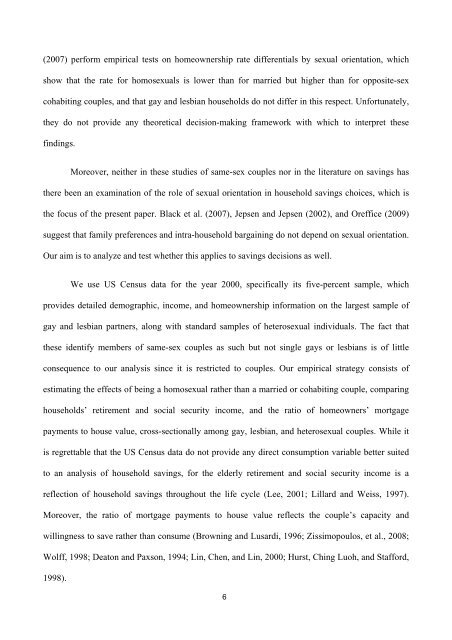Download PDF - Ivie
You also want an ePaper? Increase the reach of your titles
YUMPU automatically turns print PDFs into web optimized ePapers that Google loves.
(2007) perform empirical tests on homeownership rate differentials by sexual orientation, which<br />
show that the rate for homosexuals is lower than for married but higher than for opposite-sex<br />
cohabiting couples, and that gay and lesbian households do not differ in this respect. Unfortunately,<br />
they do not provide any theoretical decision-making framework with which to interpret these<br />
findings.<br />
Moreover, neither in these studies of same-sex couples nor in the literature on savings has<br />
there been an examination of the role of sexual orientation in household savings choices, which is<br />
the focus of the present paper. Black et al. (2007), Jepsen and Jepsen (2002), and Oreffice (2009)<br />
suggest that family preferences and intra-household bargaining do not depend on sexual orientation.<br />
Our aim is to analyze and test whether this applies to savings decisions as well.<br />
We use US Census data for the year 2000, specifically its five-percent sample, which<br />
provides detailed demographic, income, and homeownership information on the largest sample of<br />
gay and lesbian partners, along with standard samples of heterosexual individuals. The fact that<br />
these identify members of same-sex couples as such but not single gays or lesbians is of little<br />
consequence to our analysis since it is restricted to couples. Our empirical strategy consists of<br />
estimating the effects of being a homosexual rather than a married or cohabiting couple, comparing<br />
households’ retirement and social security income, and the ratio of homeowners’ mortgage<br />
payments to house value, cross-sectionally among gay, lesbian, and heterosexual couples. While it<br />
is regrettable that the US Census data do not provide any direct consumption variable better suited<br />
to an analysis of household savings, for the elderly retirement and social security income is a<br />
reflection of household savings throughout the life cycle (Lee, 2001; Lillard and Weiss, 1997).<br />
Moreover, the ratio of mortgage payments to house value reflects the couple’s capacity and<br />
willingness to save rather than consume (Browning and Lusardi, 1996; Zissimopoulos, et al., 2008;<br />
Wolff, 1998; Deaton and Paxson, 1994; Lin, Chen, and Lin, 2000; Hurst, Ching Luoh, and Stafford,<br />
1998).<br />
3

















